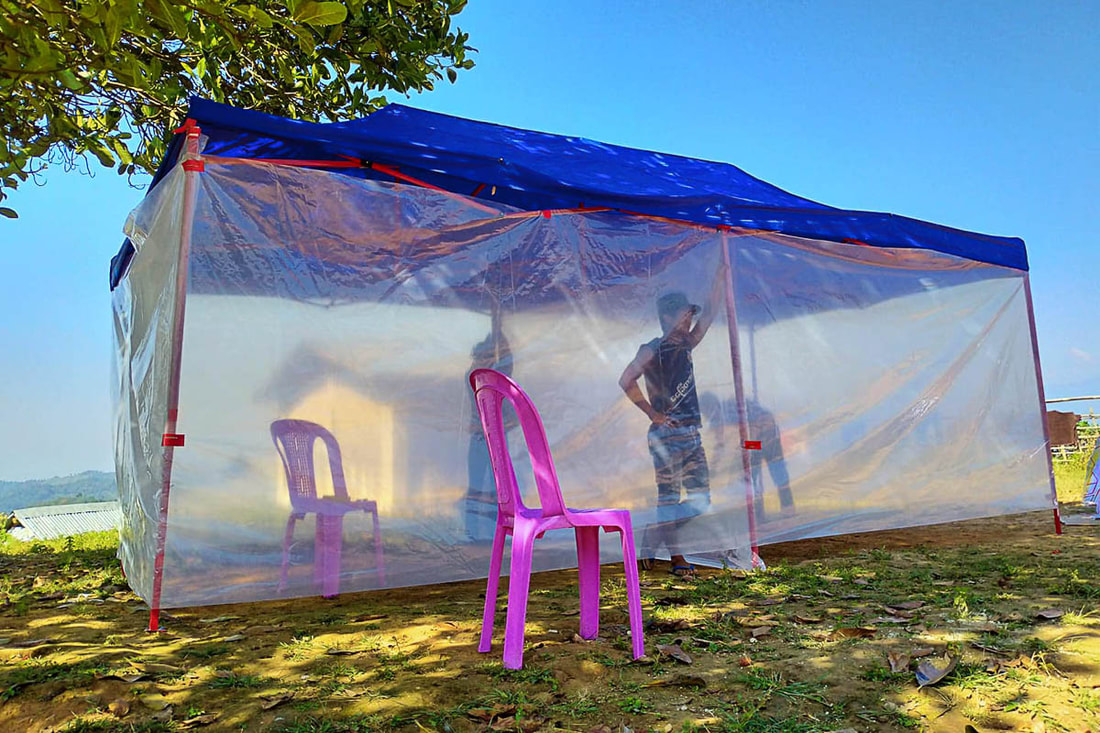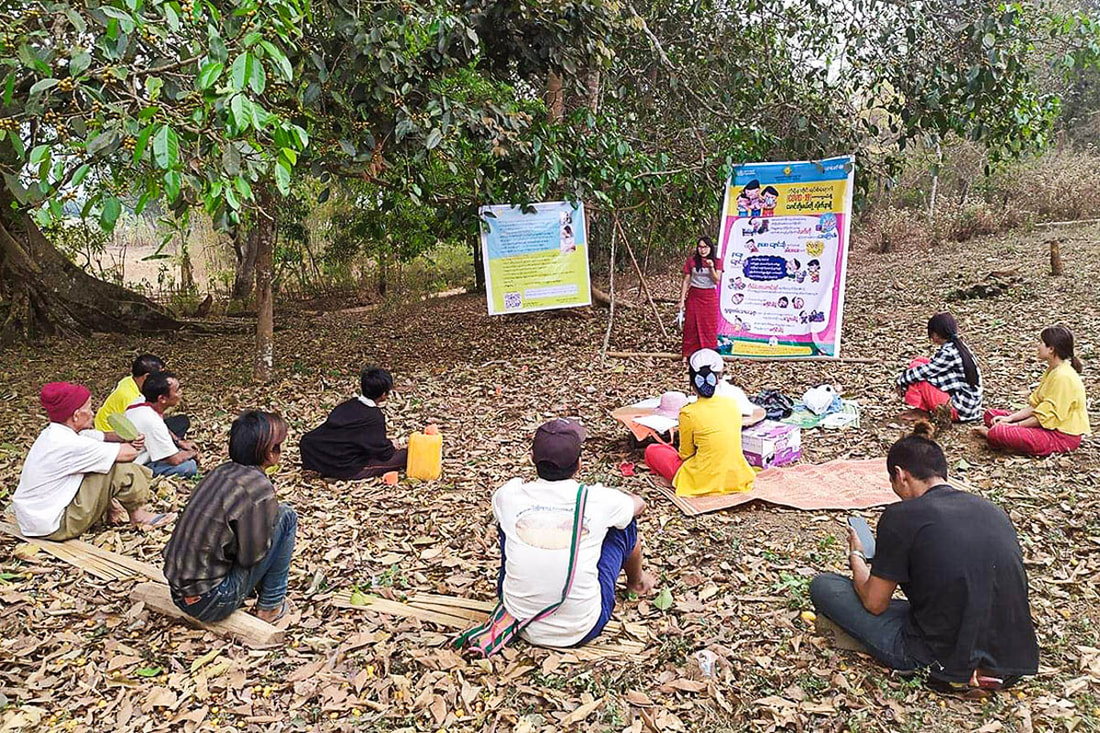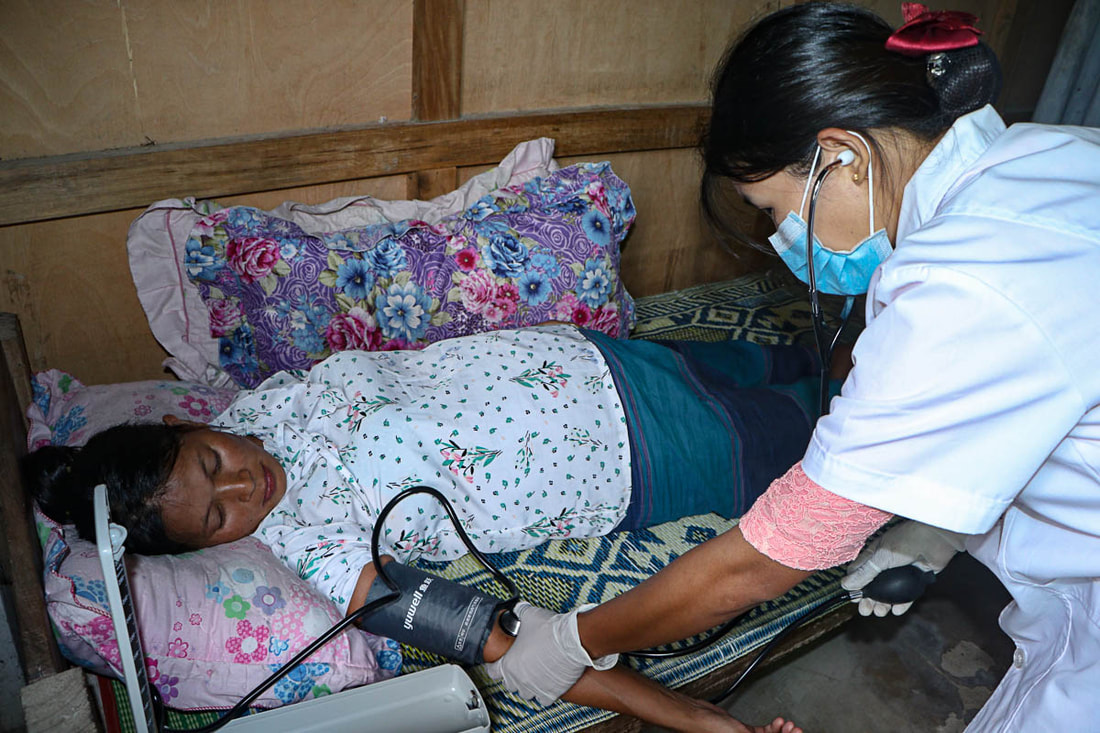|
On November 4, 2020, Community Partners International (CPI) held the second in a series of live webinars focused on “COVID-19 and Conflict in Myanmar’s Ethnic States”. At this second webinar, speakers from ethnic and community-based organizations in Myanmar’s Shan and Kachin States discussed their needs for additional assistance and support to ensure the effectiveness of their COVID-19 responses. The panelists covered the current status of the COVID-19 pandemic in their local areas and explained their collaboration with the Governments of Myanmar and China during their COVID-19 responses. They shared their concerns about resource and capacity gaps for effective responses and the needs for the additional support and actions from the Government of Myanmar. The four panelists discussed COVID-19 response efforts in Myanmar’s Ta’ang area of northern Shan State, Wa Special Region of Shan State, and non-government controlled area (NGCA) of Kachin State. The panel consisted of:
The Situation in Ta’ang Area of Northern Shan State Lway Yay Kyawt, Joint General Secretary of Ta’ang Health Committee (THC), focused on Ta’ang areas of northern Shan State. THC was established in 2004, and was recognized by Myanmar’s Ministry of Health and Sports (MoHS) together with other ethnic health organizations (EHOs) in 2015. THC has participated in workshops and meetings of the MoHS regularly since then. THC is working in five townships of Northern Shan State and they have information sharing and referral coordination with respective township medical authorities. Lway Yay Kyawt explained that providing health education, health services and up-to-date information about COVID-19 is very difficult in their coverage areas because of ongoing military clashes and the lack of infrastructure in the area. The presence of the different ethnic armed organizations (EAOs) and the military, each with security checkpoints, creates many challenges for the safety and movement of ethnic health workers trying to reach their communities. Lway Yay Kyawt explained that there are several different ethnic minority groups living in the area, many of them residing in hard-to-reach locations. Most do not have access to phone, internet or television services. In some of the villages, there are only one or two radio receivers and consequently, they have limited knowledge on health and disease prevention. There are also traditional beliefs about illnesses embedded in the community. Many villages have no access to any form of health services, including services from THC. Lway Yay Kyawt estimated that about 70% of the total population are migrant workers to China. Many children from the areas are studying in other regions of Myanmar as Buddhist novices. She expressed THC’s concern about COVID-19 being brought to the community from the returnees during the first wave and at the beginning of the second wave. THC is providing health education and distributing prevention supplies such as soap, mask and hand sanitizer to the villages. Long term support for women’s participation in THC activities means the community they reached has high acceptance of women’s leadership. THC has organized COVID-19 response committees in the villages, provided workshops on coordination and referral, and also helped them to establish entry checkpoints in the largest villages. Looking beyond COVID-19, Lway Yay Kyawt stressed the importance of EHOs for improving health in Ta’ang regions. She envisioned a federal health system for their community to have better access to healthcare in the future. She said, “We, local people, know better about the needs of our community and issues to tackle and therefore, we believe, a federal health system is the only way to provide full coverage and comprehensive health services to everyone.” However, she understands that THC needs to be strengthened both technically and financially and would like to see greater support and cooperation to achieve this. The Situation in Non-Government Controlled Areas of Kachin State Tu Li, representing the Kachin Development Group (KDG), explained that in NGCA areas of Kachin State, the lives of people living in their community and those displaced by conflict and living in internally displaced person (IDP) camps are increasingly similar. Both face significant difficulties meeting their basic needs. Many community members have lost access to their farms due to conflict and landmines rendering these locations unsafe. They are now mostly working as day laborers or leaving their communities to become migrant workers in order to survive. Meanwhile, people living in IDP camps, who have lost their homes as well as their property, have survived by doing odd jobs or by crossing the border into China to seek work. During the COVID-19 crisis, people working in China were sent back and border trading was suspended. This means that many people in the community are facing difficulties to support their families. Tu Li explained that their local government established a COVID-19 response committee in early February 2020 to work closely with humanitarian organizations. They provide health education on COVID-19 by sharing public health information, orders and instructions to the community in local language through local television and social media. They have distributed basic prevention supplies such as masks and hand sanitizer to communities, including IDP camps, and are providing hand-washing facilities in public areas such as markets. From April 2020, they established entry checkpoints for the people coming from government controlled areas and opened quarantine centers. The main challenges they are facing for COVID-19 response are limited human and material resources, technical skills, medicines, and testing and treating facilities. The only way to test the suspected cases is to send swab samples to China. As of November 2020, they had not recorded any confirmed COVID-19 cases in their areas. Tu Li expressed his concerns about humanitarian assistance for people living in IDP camps. Since the humanitarian organizations focused on relocation of IDP to their areas, humanitarian assistance is becoming more thinly stretched. Additionally, after China closed borders due to the COVID-19 crisis, certain IDP camps which can only be reached from China are no longer receiving any assistance and are therefore facing difficulties. However, they have less risk of contracting with COVID-19 as they have little contact with the outside world. He said, “Yes, if COVID-19 reaches the camps, it could be difficult to control, but if there is no food, it will also threaten the lives of people.”
In the long run, he said, it will be difficult for people to follow COVID-19 prevention rules when their survival is at risk. In his opinion, the local authorities and international organizations providing humanitarian assistance should work together to control the COVID-19 situation in the local community. He seconded the words of Dr. Htet Min Lwin who said policies should be developed with the involvement of technical experts who understand the local context well. He believed those policies have a better chance to be successful when implemented. The situation in the Wa Special Region Amay Nu, Deputy Director of the State Health Department of Wa Special Region, explained there are two regions in their area: north and south. The northern region shares a border with China and the southern region shares a border with Thailand. There are 30 townships: 24 in the northern region with a population of around 500,000; six in the south region with a population of around 80,000; and about 17 ethnic groups residing in these regions. They have a central health department, a regional health department, three district health departments, two township health departments and rural health centers. They are working with the MoHS as well as UN and international organizations to provide health care services for their community. For COVID-19 response, the Wa Health Department has formed a response committee and created entry checkpoints and quarantine centers in border areas and other entry points. After the COVID-19 outbreak in Rakhine, they worried about their community and therefore closed borders and other entry points. They announced to the community that they would take serious legal action if they did not follow COVID-19 prevention rules. They also translated the MoHS COVID-19 information into many of the languages used in local communities, and provided public awareness and education through pamphlets, posters, and announcements through loudspeakers and on local television channels. They have also distributed masks and provided hand washing facilities to their local community. For suspected cases, nasopharyngeal swab samples were taken and delivered to China. Their health staff were trained by the Chinese government staff on how to take nasopharyngeal swabs. The samples were transferred to China at the midpoint of a bridge situated on their border so that no one needed to cross the border. No positive cases have yet been confirmed in the Wa Special Regions. If an outbreak occurs, they will face serious challenges as they lack the capacity and resources to treat patients locally. It is very difficult to refer patients to Myanmar government hospitals because they are very far away, and Chinese government hospitals will not accept patients crossing the border. The Wa local authority has donated two hundred million kyats to the Government of Myanmar for COVID-19 response activities. The Wa Health Department received prevention supplies such as masks, hand sanitizer, handwashing facilities and personal protective equipment (PPE) from the MoHS, UN, international organizations and the Government of China. However, these materials are not sufficient to meet their needs. Their challenges for COVID-19 response include insufficient prevention supplies, medicines and medical supplies, and a lack qualified human resources such as doctors and nurses. The Wa Health Department would like to receive support, human resources, medicines and material supplies from the Government of Myanmar well and international organizations. She said, “We expect all of our community members from Wa Special Region to receive the COVID-19 vaccination together with other community members of Myanmar once it is available.” COVID-19 and a Future Federal Health System Dr. Htet Min Lwin shared his knowledge on the national level response to the COVID-19 pandemic in ethnic areas. A coordination and cooperation committee to work with ethnic armed groups in the fight against COVID-19 was formed in April 2020 with the order of the President, and it was led by Dr. Tin Myo Win, Chairman of the Peace Commission. The committee is conducting coordination in the peace discussion meetings since May 2020 with 14 EAOs. However, the Myanmar government is struggling with its own capacity and resources and therefore, as far as he knows, they could only donate prevention supplies such as masks, hand sanitizer, bleach, and PPE to these EAOs. Dr. Htet Min Lwin observed government staff and EAOs (in plain clothes) are working together at certain COVID-19 screening points and it can be taken as an example of effective collaboration in COVID-19 response. However, he said, “If a COVID-19 outbreak occurs in non-government controlled areas, it will be very difficult to respond because of difficulties in transportation, coordination and the inability of local health systems in conflict areas to treat locally.” Dr. Htet Min Liwn explained that the development of a well-functioning federal health system is not as easy as it sounds. Decentralization, delegation of power, political will, technical skill, understanding of local context, qualified human resources and peace are all essential ingredients to achieve universal health coverage within a federal health system. However, it is necessary to aim for the development of a comprehensive and reliable health system in Myanmar. To achieve that politicians, policy makers, public health experts and health financing experts need to come together to find ways forward. The report on the first webinar in this series can be found here. Comments are closed.
|
AuthorCPI Admin Archives
July 2024
Categories
All
|
|
|
COMMUNITY PARTNERS INTERNATIONAL
580 California St Fl 16, Ste 1658, San Francisco, CA 94104-1068, USA [email protected] +1 510 225 9676 We are a registered nonprofit 501(c)(3) Public Charity. TAX ID 94-3375666 |
©
Community Partners International




 RSS Feed
RSS Feed
